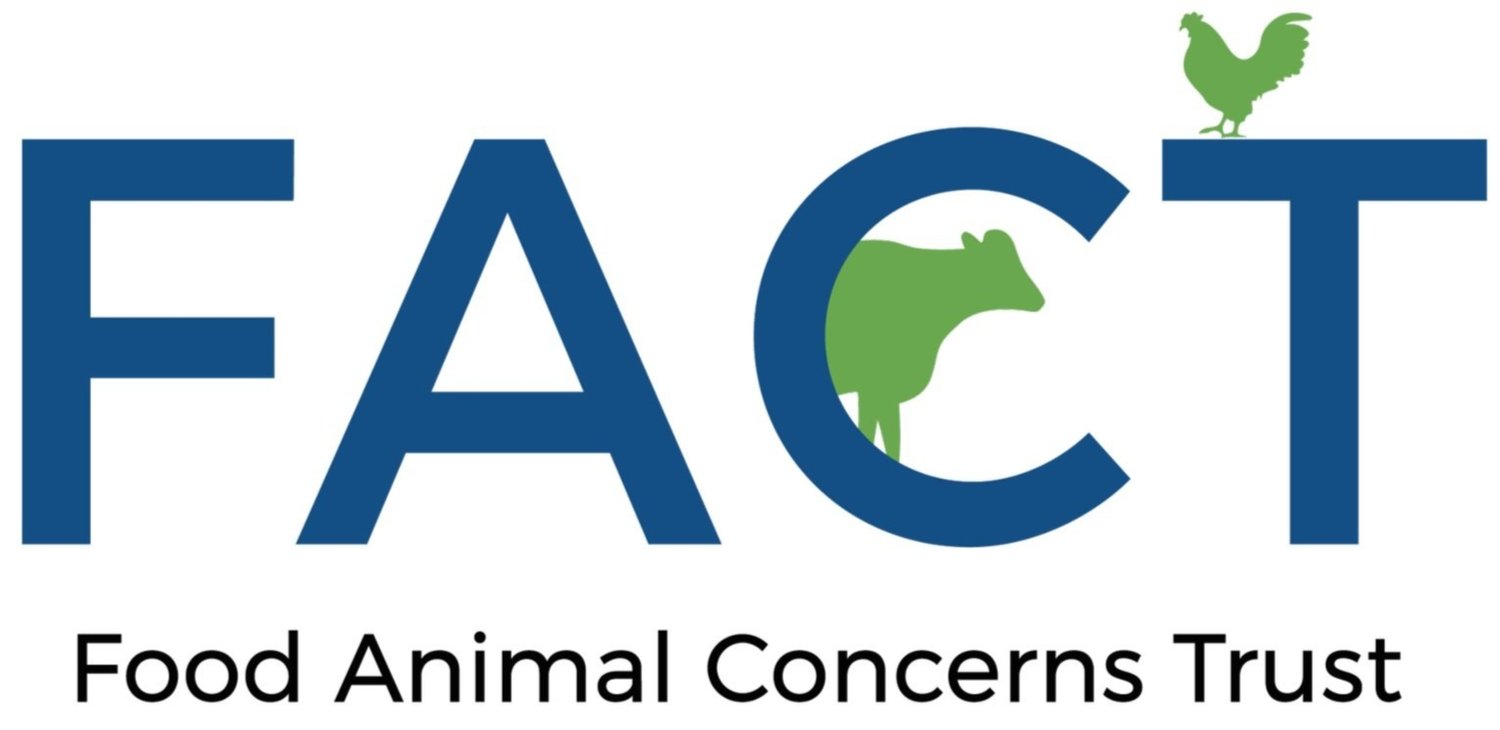Poisonous Pork: Carbadox Residue Violations in USDA Testing
By Madeleine Kleven and Steve Roach, FACT’s Safe and Healthy Food Program Team
Every year the United States Department of Agriculture (USDA) samples for residues of chemicals and antibiotics in our food. If these residue levels are above a determined threshold, that presents a “violation”, and the food isn’t safe to consume. For the last 8 years, the most common residue violation detected in random sampling of pigs has been carbadox, a known carcinogen. According to our latest estimates from USDA and some analyses, we know carbadox is found in almost 1% of the roaster pigs sampled each year. Given the number of these pigs slaughtered every year, 1% represents over 6,500 pigs or 390,000 servings of pork contaminated with a carcinogenic drug. The USDA only takes between 200-400 samples every year out of about 650,000 roaster pigs that are slaughtered. So, the majority of contaminated pork is not sampled, but distributed to people across the country.
This is totally unacceptable, and just another reason why we are pushing the FDA to get carbadox off the market. Not surprisingly, the FDA - the agency responsible for protecting public health - also has some of its own reasons it wants to get the carcinogenic drug off the market. Namely, the fact that it presents health risks to consumers, but also because they’ve determined that the approved method (the method USDA has been using) for detecting residue levels and ensuring consumer safety isn’t sensitive enough to detect all of the carcinogenic residues present in the tissue. Basically, the approved method scans the top of the water looking for icebergs but doesn’t have the capability to look below the surface. Yikes. That means, the 1% of violations that are detected every year, are probably just scraping the surface, and are a serious underestimate of the actual levels of carcinogens present in the pork supply.
The Safe and Healthy Food Program has put together a report based on the USDA residue data on carbadox. You can read the full report here and read some of the highlights below:
Facts about carbadox:
Carbadox is a known carcinogen that could only be approved if the FDA determined that using the drug did not result in any carcinogenic residues in edible pork tissues.
Carbadox is a drug primarily used to control diarrhea in pigs living in confinement. It is also used as a growth promoter.
When the drug is fed to pigs in medicated feed it is metabolized in the animal resulting in leftover broken down chemicals or metabolites, some of which are also carcinogenic. These leftover chemicals can stay in pork tissue and when the pig is slaughtered these are present in the pork products people eat. This means people can ingest carcinogenic residues, putting them at a higher risk of cancer.
The FDA proposed a ban on the drug in 2016, but pushback from the industry stalled efforts and the proposal didn’t go anywhere. In 2020 the FDA came back with a more roundabout way to get the drug off the market - determining the residue detection method for assuring consumer safety is inadequate. Currently, the FDA has decided the method isn’t good for detecting all of the carcinogenic residues present in food, but because of legal proceedings with the drug maker, the method is still being used (by USDA) and so is carbadox.
Residue Data:
The method for finding residues in pork tissue measures a metabolite of carbadox called QCA. QCA is not carcinogenic and when the method was approved by the FDA, they believed that if QCA was below a certain level, 30 ppb, then carbadox had broken down enough and there were no carcinogenic chemicals or residues present in the pork tissue.
Since the method was approved a handful of studies have come out showing that QCA is not a good marker residue for carbadox, because carcinogenic residues such as DCBX (desoxycarbadox) persist much longer than believed and, in some instances, persist longer than QCA does in pork tissue.
Almost every year since 2016 residue levels of QCA have been detected above 30 ppb. In 2018 one sample detected QCA at 275.16 ppb that’s about 10 times the violative level.
The failure of the testing method and the routine residue violations indicate that the use of this drug consistently results in carcinogenic residues in edible tissues in violation of the law but still FDA and USDA allow the continued use of the drug.
The bottom line is, that the USDA is consistently finding residue violations year after year even with a method that the FDA has said isn’t sensitive enough to detect all of the carcinogenic residues present. Imagine if we had a residue detection method that was sensitive enough. Who knows how many more violations we would find. All we know is, that when it comes to a cancer-causing and dangerous drug like carbadox, even one violation is too many. It’s time for the FDA to take more aggressive action to ban carbadox and finally put the public before the interests of the drug industry and factory farming.
